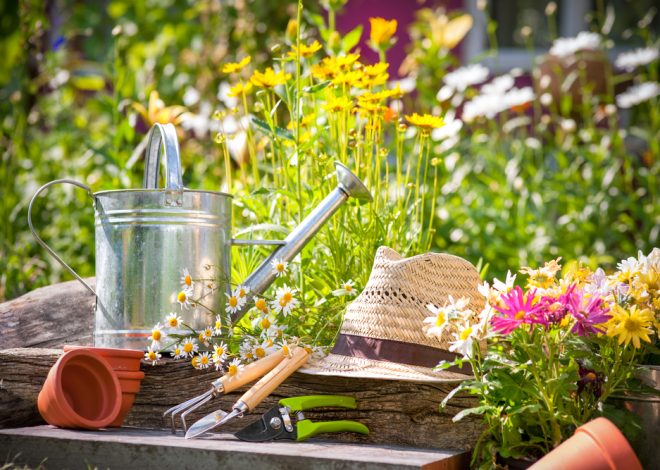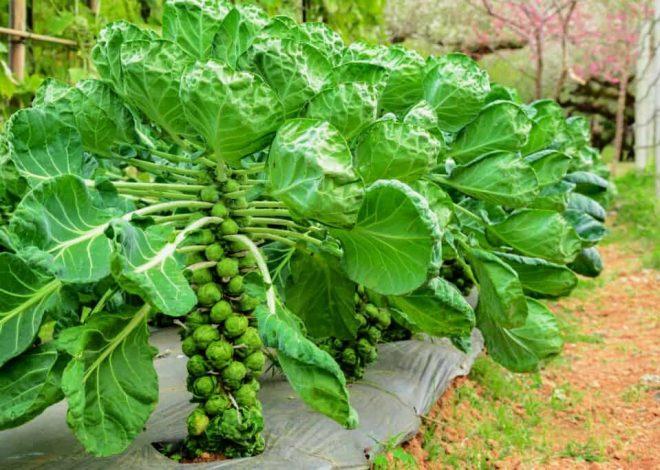
How to Take Care of Rio Dipladenia Perennial
Rio Dipladenia is a great choice if you want to add a vibrant, tropical touch to your garden. This striking plant produces beautiful blooms in bold colors throughout the summer and into the early fall. With proper care and optimal growing conditions, your Rio Dipladenia will erupt into a waterfall of brilliant red, pink, or white blossoms guaranteed to turn heads.
Originally hailing from the steamy Amazon basin, Rio Dipladenia thrives with warm temperatures, lots of sunshine, and adequate moisture. Follow this comprehensive care guide to help your Rio Dipladenia Perennial put on the ultimate floral display while flourishing season after season.
Choosing the Best Spot for Optimal Growth
When it comes to prime real estate for your Rio Dipladenia, sunlight and warmth take top priority.
Bask in Bright Light
Rio Dipladenia craves extremely bright, direct light in order to fuel its near-nonstop blooming. Place your plant in an east, south, or west-facing location that receives at least six hours of direct sun daily. A south-facing window is ideal, allowing your Dipladenia to soak up the intensive rays it loves.
If you must situate your plant in partial sun due to limited options, augment with a grow light to simulate the high-intensity illumination of its native habitat.
Soak Up the Rays
Since Rio Dipladenia hails from the steamy tropics, it thrives in hot conditions most other flowering plants would wilt under. Ideal daytime temperatures for your Dipladenia range from 70-90° F. Nighttime lows of 65° F or warmer will keep your plant pumping out blossoms.
Move potted plants indoors or enclose outdoor plantings if temperatures dip below 60° F. Prolonged exposure to chillier weather can shock the system of this heat-loving specimen.
Provide Proper Watering for Healthy Growth
Rio Dipladenia enjoys consistently moist (but not soggy) soil during the active growing season. Follow these watering guidelines to maintain an optimal moisture level.
Water Well
Rio Dipladenia features large, lush leaves and flowers that need adequate water to support vigorous growth. Soak thoroughly at soil level whenever the top inch becomes dry. Apply enough water so it trickles from the container’s bottom drainage holes.
Dry Out In Between
While Rio Dipladenia Perennial enjoys moist soil, allowing it to thoroughly dry out between waterings is crucial. Sitting in soggy soil will suffocate roots and encourage fungal diseases. Always empty any water in the drainage saucer promptly after irrigation.
Ramp Up In Heat
Hot, dry weather accelerates soil moisture evaporation. During summer heat waves, your Dipladenia may need watering every other day or even daily if planted under full sun. Monitor soil moisture levels vigilantly and water immediately when dryness is detected.
Cut Back In Cool Weather
As temperatures cool in autumn, your plant enters a slower growth phase requiring less frequent irrigation. Allow soil to dry out further between waterings, taking care not to oversaturate. Discontinue fertilization and limit water during winter dormancy.
Feed Your Plant for Vigorous Growth
While Rio Dipladenia isn’t too demanding in terms of nutrients, feeding at strategic intervals ensures your plant reaches its full flowering potential.
Fertilize At Planting
Mix a balanced, water-soluble fertilizer for blooming houseplants into the soil at planting time. This gives young root systems an immediate nutrition boost to fuel establishment.
Fertilize with Restraint
Avoid over-fertilizing, which can scorch tender roots and foliage. During active growth, feed containers monthly and in-ground plantings every 6-8 weeks using half-strength fertilizer. Discontinue feeding after September to allow old growth to harden off before winter.
Refresh Container Plantings
Uproot, trim back, and repot rootbound container specimens in fresh potting mix amended with slow-release fertilizer beads. This keeps your Dipladenia vigorously blooming year after year.
Display Your Dipladenia With Proper Support
Left to its own devices, sprawling Rio Dipladenia assumes a rambling habit. Guide your plant’s gushing growth vertically with staking and pruning for a tidier, more contained silhouette.
Stake Stems
Insert tall bamboo stakes around interior branches 6-12” from the base when plants reach 12-18” high. Tie flexible plant ties loosely around stems and stakes as needed, taking care not to bind too tightly.
Prune as Needed
Trim back wandering shoots and any branches extending beyond the support. This encourages bushier, more compact growth while eliminating potential legginess.
Deadhead Frequently
Snip off spent blooms regularly to maintain a perky, attractive appearance and promote additional flushes of flowers. Trimming back older, woodier branches stimulates the emergence of new growth.
Grow in Suitable Container or Garden Conditions
While adaptable to various settings, Rio Dipladenia performs best when grown under specific container or garden conditions mimicking its natural habitat.
Cultivate in Containers
The blooming brilliance of Rio Dipladenia shines when grown as a container focal point on sunny patios, porches, and poolside. For potted Dipladenia, always choose containers 2-4” wider than the current rootball to accommodate vigorous growth. Opt for pots with multiple drainage holes and made of weather-resistant materials like terracotta or plastic.
Use a rich, peat-based potting medium amended with time-release fertilizer. Add an inch layer of decorative mulch like crushed stone or bark on soil surfaces to retain moisture while deterring weeds. Site containers in dappled afternoon shade to protect delicate roots from intense heat.
Grow as a Garden Bed Accent
Thanks to its small, tuberous root system, Rio Dipladenia also adapts well when underplanted among borders and garden beds. Select a site boasting fertile, moisture-retentive loamy soil enhanced with ample compost. Space plants 18-24” apart to prevent overcrowding as they fill out.
Surround with thick mulch to keep soil evenly moist and help control weeds. Accompany with companions like vinca, pentas, cosmos, or dwarf zinnias that share preferences for heat, sunlight, and well-drained soil.
Troubleshoot Issues with Your Dipladenia
When provided suitable growing conditions and care, vibrant Rio Dipladenia will generously reward you with billowing color all season. However, improper cultural practices can lead to stressed, underperforming plants. Here’s how to troubleshoot the most common problems should they arise.
Promote Blooming
If few to no blossoms appear, insufficient sunlight is likely inhibiting bud production. Relocate plants to the brightest location possible, fertilize to stimulate new growth, and remove any developing seed pods.
Overly rich soil can also suppress flowering while fueling floppy, leggy growth unable to support blooms. Avoid soil mixes blended for vegetables, or excess compost and fertilizer. For container plants, refresh the entire rootball yearly using a lighter potting medium.
Prevent Wilting
Rio Dipladenia rapidly wilts with any deficits in water or moisture-draining soil. Rule out underwatering by thoroughly irrigating until water flows from drainage holes. Feel soil at 6” depth to ensure water penetrates. Increase watering frequency in hot weather and direct sunlight.
If wilting persists with adequate water, poor drainage is likely drowning the roots. Discard any water pooled in saucers promptly after watering. Replant excessively soggy soil mixes with a faster-draining potting medium containing sand or perlite.
Stop Stem Rot
Overwatering coupled with poor air circulation can nurture fungi causing stems to rot at soil level. Allow plants to thoroughly dry between irrigations and space for airflow. Remove affected parts immediately, cutting well below signs of damage. Adjust watering practices to prevent recurrence.
Control Pests
Vigorous Rio Dipladenia is remarkably resistant to most insect pests and diseases. However, watch for red spiders, mealybugs, whiteflies, and aphids during hot, humid weather. Hose plants down vigorously to dislodge invaders, or apply neem oil or insecticidal soap for heavy infestations. Isolate affected plants to prevent transmission.
FAQs
How do I overwinter my Rio Dipladenia indoors?
As days shorten in early fall, gradually reduce water and stop fertilizing to allow old foliage to yellow and die back. Once the plant goes dormant, cut stems down to 6” above the soil and relocate the pot to a cool, dim location for winter. Water very sparingly, just enough to prevent soil from totally drying out. Around late winter, resume normal care and move back into sunlight to stimulate re-growth for spring.
Why are seed pods forming on my Dipladenia and how should I manage them?
Like other flowering plants, seed pod formation requires energy and resources otherwise used for additional blossoming. Snip off any unwanted pods as soon as noticed. However, if propagation is your goal, allow a few seed heads per plant to mature before collecting seeds.
Should I deadhead my Dipladenias for continuous flowering?
Regular deadheading or removal of faded blooms is key for promoting repeat flushes of flowers all season. Always pinch or snip off old blossoms as soon as petals wither or discolor for consistent color. Deadhead daily or every other day for the heaviest flower yield.
What are good companion plants for Rio Dipladenia?
Some great options for planting beside Rio Dipladenia in beds or mixed containers include:
- Vinca
- Pentas
- Cosmos
- Marigolds
- Dwarf zinnias
- Impatiens
These all share preferences for heat, moisture, and ample sunlight. Plus their heights and habits complement sprawling Dipladenia nicely.
What are signs my Dipladenia needs repotting?
Indicators mature Rio Dipladenia requires moving to a larger container include roots visibly circling inside the pot, stunted growth, wilting despite regular watering, poor flowering, and needing frequent water refills. Ideally repot containerized Dipladenias each spring even with no obvious cues. Overgrown plants often bloom better after roots are trimmed back and refreshed in roomier pots with nutrient-rich soil.
Conclusion
Few flowering plants can match dazzling Rio Dipladenia’s summertime brilliance whether grown as a striking container focal point or blended within vibrant garden beds. Provide this Brazilian native a sunny, warm home alongside fertile, moisture-retentive soil for an eye-catching display of blooms. Train and prune young plants as needed for tidy shape, fertilize regularly, and irrigate deeply as top layers become dry. Situate in partial shade and elevate pots with dry river rock-filled saucers during extreme heat.
Dive into optimizing soil for organic gardening: A comprehensive guide to discover the secrets of cultivating a thriving garden ecosystem; just as the vibrant Rio Dipladenia Perennial flourishes under optimal conditions, this guide promises to ignite a new passion for gardening by offering insights that richly and relentlessly reward your efforts with showy starbursts of organic beauty.






